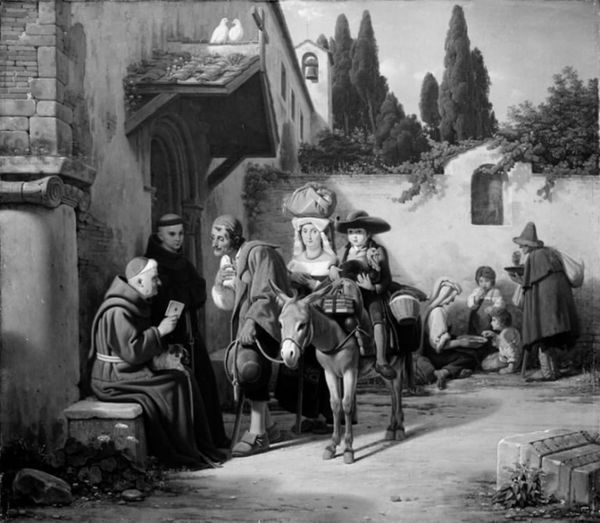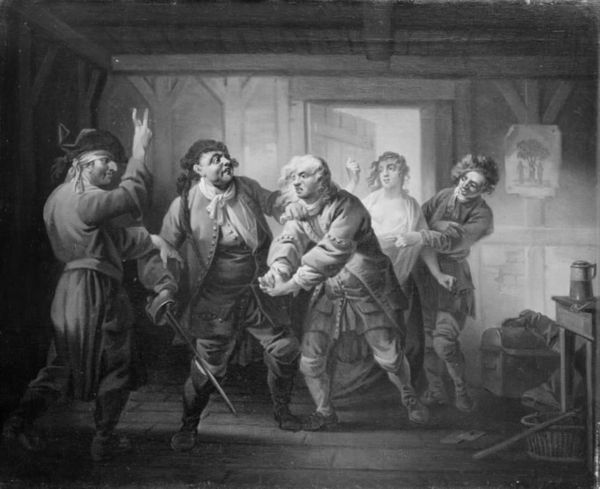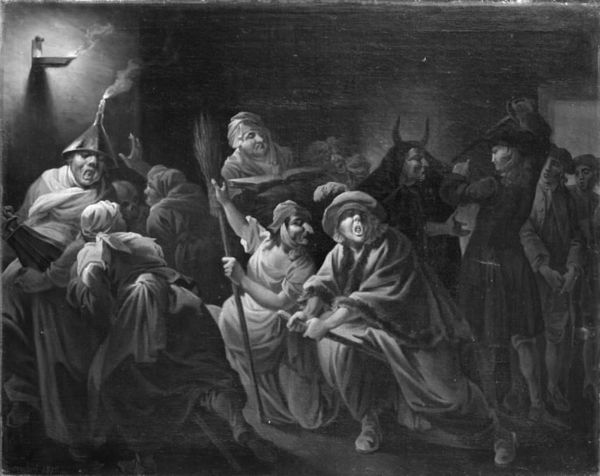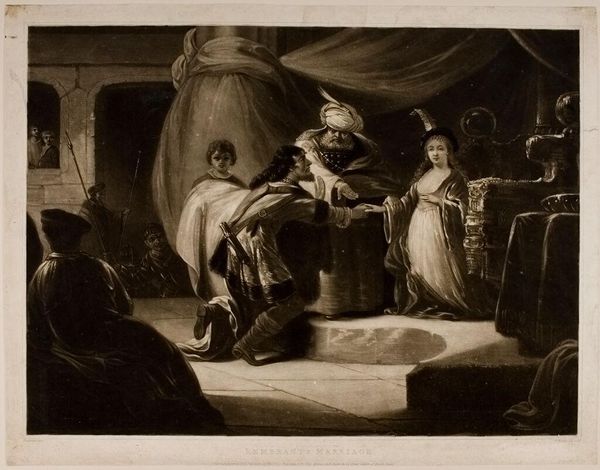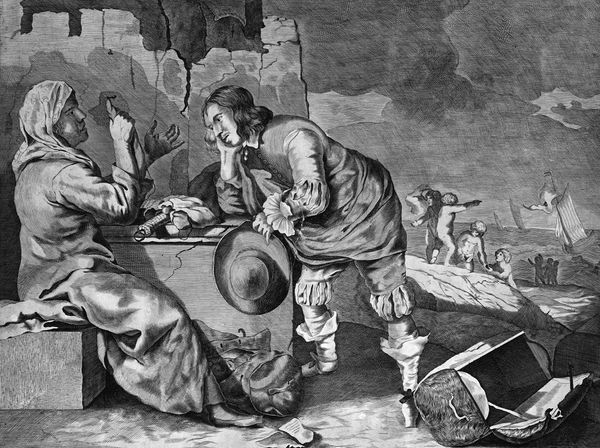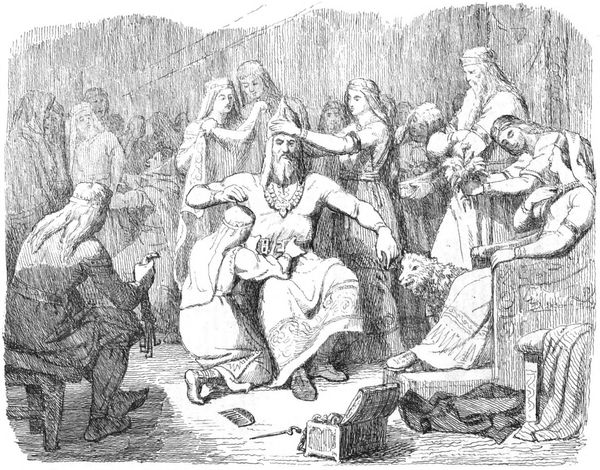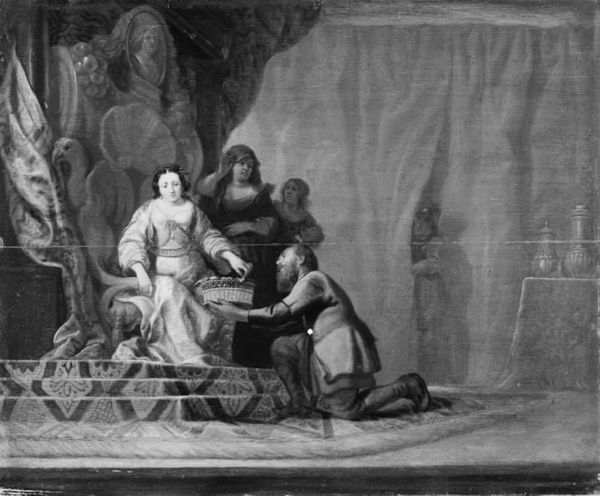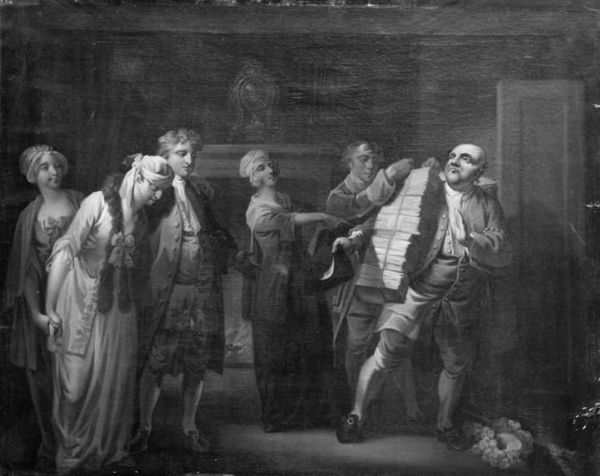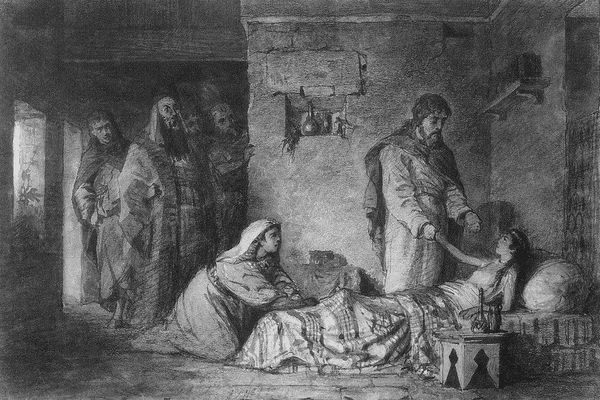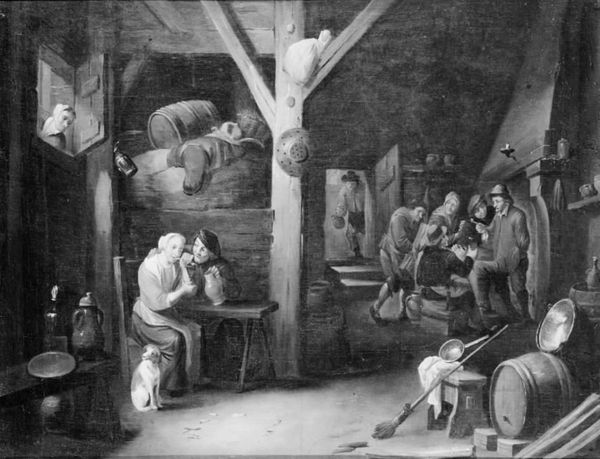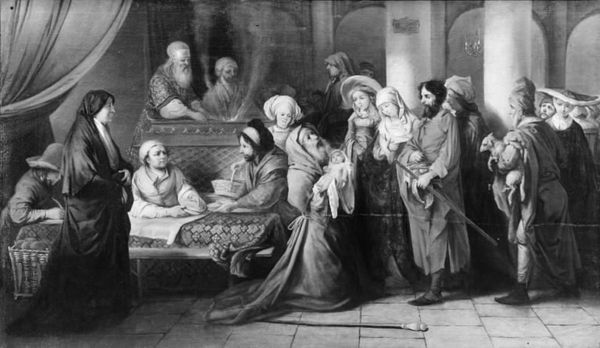
Niels Ebbesen besøger en fattig kone på vej til Randers, morgenen efter grev Gerts død 1821 - 1836
0:00
0:00
painting, canvas
#
portrait
#
narrative-art
#
portrait image
#
painting
#
canvas
#
romanticism
#
history-painting
Dimensions: 87.5 cm (height) x 109 cm (width) (Netto)
Curator: Peter Raadsig painted this canvas between 1821 and 1836. The title is "Niels Ebbesen Visiting a Poor Woman on the Way to Randers, the Morning After the Death of Count Gert." It is an history-painting from the Romanticism era. Editor: A somber piece, wouldn't you say? The monochrome palette and heavy shadowing contribute to a deeply mournful atmosphere, like a nation collectively holding its breath. Curator: Indeed. Note how Raadsig employs a strong sense of linear perspective, guiding the eye directly to Niels Ebbesen. His posture is very deliberate, forming a visual and thematic center for the painting. Editor: Ebbesen's iconic status seems almost forced. I can't help but consider who gets written into the dominant narratives of Danish history, and at whose expense. That peasant woman looks so very fragile, set against Ebbesen in shining armor. What agency does she have? Curator: Interesting point. Now look closer to Ebbesen. Raadsig skillfully balances his character through his confident gaze and through his gesture toward the woman, offering her money or something valuable. Editor: Sure, but is it absolution or some sort of payoff for her family's likely material burden given her community's probable involvement in covering his violent deed? We cannot disassociate these types of narratives from political uses as origin myths to consolidate collective belonging and power. This woman's place and gaze remind us of that asymmetry of violence, gender and class power. Curator: And look at how Raadsig has placed some onlookers like secondary spectators in a play watching Niels. Editor: Yes, this play with visibility and knowledge structures is important. Their looks also direct ours. Curator: Ultimately, Raadsig’s choices elevate and frame Ebbesen while rendering the historical context in a very symbolic, rather theatrical fashion. Editor: Indeed, and that very structure invites us to continuously question the motivations and consequences embedded within representations of national identity.
Comments
No comments
Be the first to comment and join the conversation on the ultimate creative platform.
